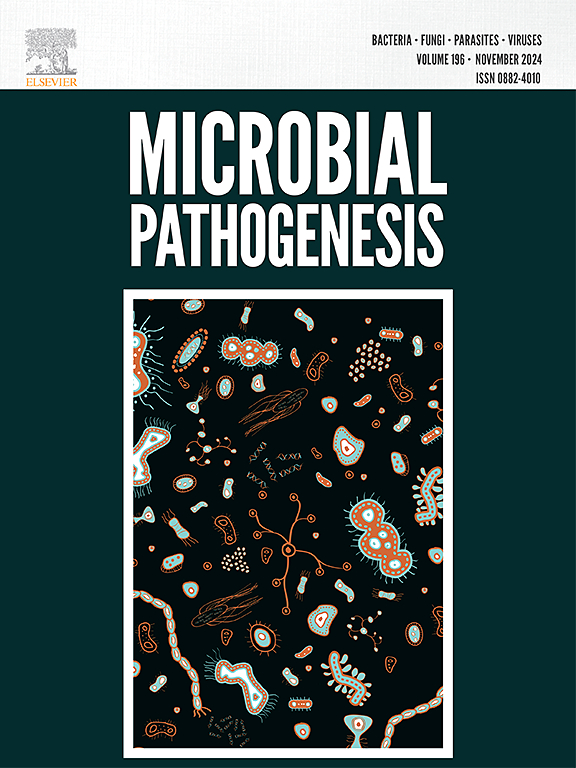结核病诊断的进展:最新进展。
IF 3.5
3区 医学
Q3 IMMUNOLOGY
引用次数: 0
摘要
结核病(TB)是由单一病原体引起的主要威胁生命的疾病之一,由于其高耐药性已成为社会威胁。在COVID - 19大流行之前,结核病甚至超过了艾滋病。每年受影响的人数都呈指数级增长。2023年报告了820万结核新发病例。造成结核分枝杆菌(Mtb)如此高传染性的因素有多种,包括快速耐药菌株的出现、治疗失败和缺乏适当的诊断。为了对抗感染,早期和有效的治疗感染是非常关键的。这就要求存在有效的和护理点(POC)诊断工具,以成功地管理疾病。常规诊断包括染色、显微镜、结核菌素皮肤试验和胸部X线片。然而,它们有各种各样的局限性,这增加了公众的威胁。这些工具缺乏运输的便利性,灵敏度较低,耗时且缺乏准确性。为了消除这些限制和弥合与疾病正确诊断相关的差距,各种生化,分子,免疫学诊断工具已经出现,以拯救感染。这些现代工具在描述结核分枝杆菌特征、检测与现有药物相关的突变和确保有效管理方面具有足够的效力。在本文中,我们将重点介绍现代诊断工具,如T-SPOT,人工智能,电子鼻,RT PCR, TB LAM, CRISPR,基于生物传感器的检测技术,包括在资源有限的医疗机构临床设置中检测结核分枝杆菌的常规技术,以全面诊断结核病。本文章由计算机程序翻译,如有差异,请以英文原文为准。

Advancements in tuberculosis diagnostics: An update
Tuberculosis (TB) is one of the major life-threatening diseases caused by a single pathogen which has become a social menace owing to its high resistance. TB has even surpassed AIDS prior the COVID 19 pandemic. Every year the number of affected persons is increasing exponentially. In 2023 8.2 million new cases of TB were reported. There are various factors responsible for such infectivity rate of Mycobacterium tuberculosis (Mtb) including emergence of rapid resistant strains, treatment failure and lack of proper diagnosis. In order to combat the infection, early and effective treatment of the infection is very crucial. This calls for the existence of effective and point of care (POC) diagnostic tool for successful management of the disease. The conventional diagnostics includes staining, microscopy, tuberculin skin test and chest X ray. However, they have various limitations which increases the public threat. These tools lack the ease of transportation, less sensitive, time consuming and lack accuracy. To eliminate such limitations and bridge the gap associated with the proper diagnosis of disease, various biochemical, molecular, immunological diagnostic tools have come up in rescue of the infection. These modern tools are potent enough in characterizing Mtb, detect mutations correlated with the existing medications and ensure effective management. In this article we are focusing on modern diagnostic tools such as T-SPOT, artificial intelligence, electronic nose, RT PCR, TB LAM, CRISPR, biosensor-based detection techniques including the conventional techniques for detection of Mtb in clinical setup in resource limited healthcare facilities for comprehensive diagnosis of tuberculosis.
求助全文
通过发布文献求助,成功后即可免费获取论文全文。
去求助
来源期刊

Microbial pathogenesis
医学-免疫学
CiteScore
7.40
自引率
2.60%
发文量
472
审稿时长
56 days
期刊介绍:
Microbial Pathogenesis publishes original contributions and reviews about the molecular and cellular mechanisms of infectious diseases. It covers microbiology, host-pathogen interaction and immunology related to infectious agents, including bacteria, fungi, viruses and protozoa. It also accepts papers in the field of clinical microbiology, with the exception of case reports.
Research Areas Include:
-Pathogenesis
-Virulence factors
-Host susceptibility or resistance
-Immune mechanisms
-Identification, cloning and sequencing of relevant genes
-Genetic studies
-Viruses, prokaryotic organisms and protozoa
-Microbiota
-Systems biology related to infectious diseases
-Targets for vaccine design (pre-clinical studies)
 求助内容:
求助内容: 应助结果提醒方式:
应助结果提醒方式:


